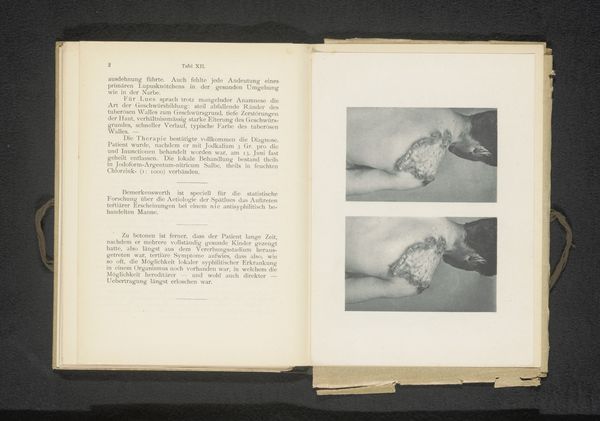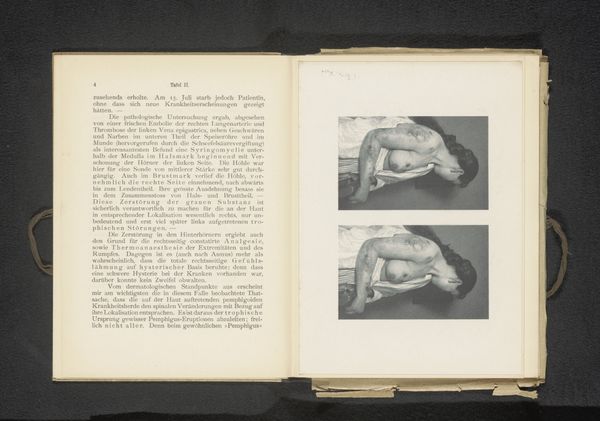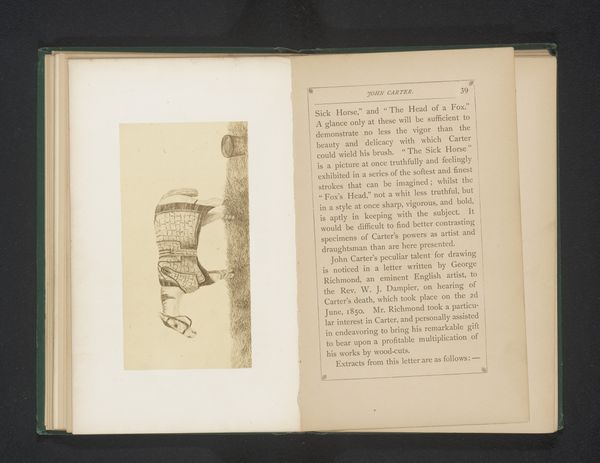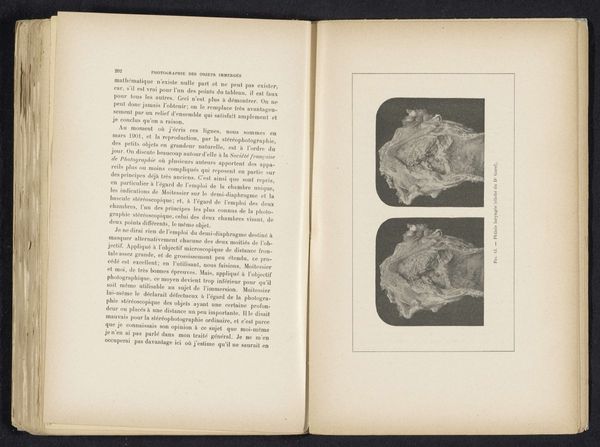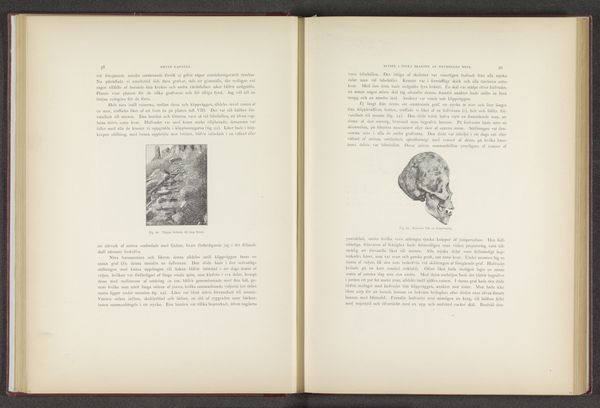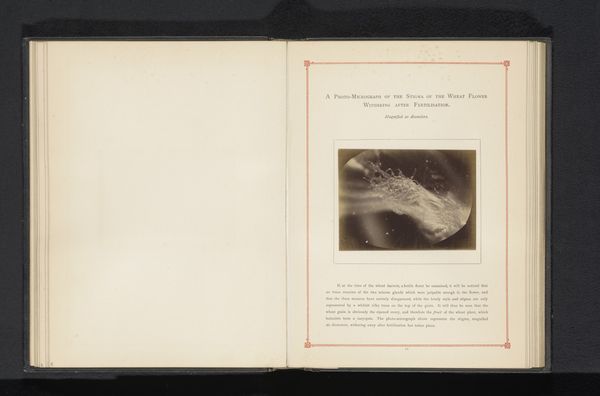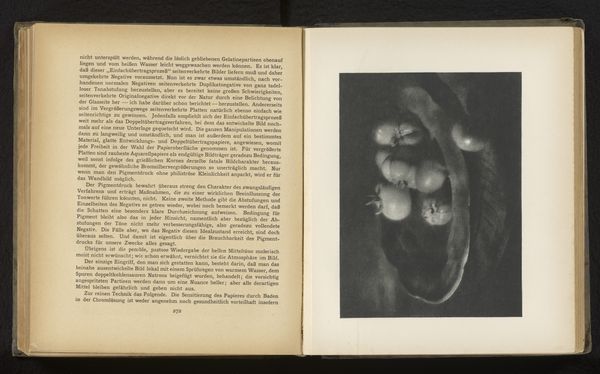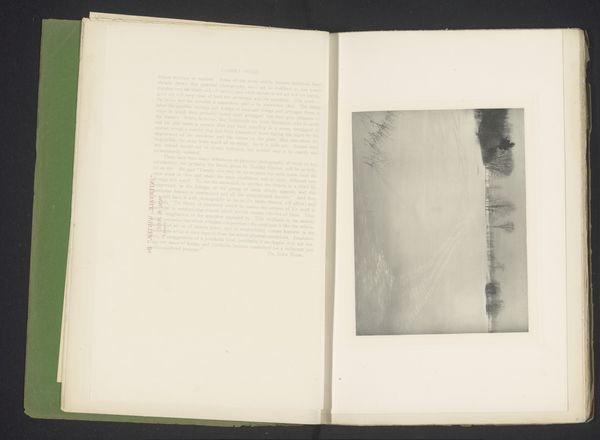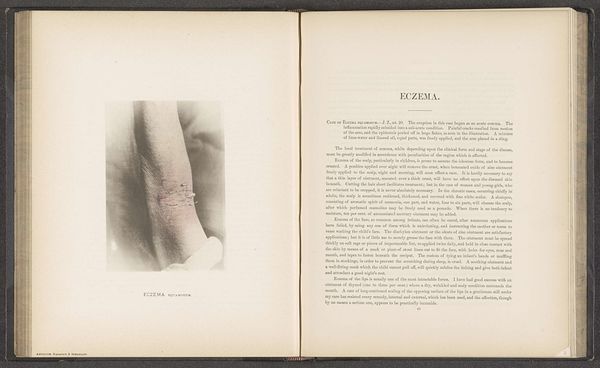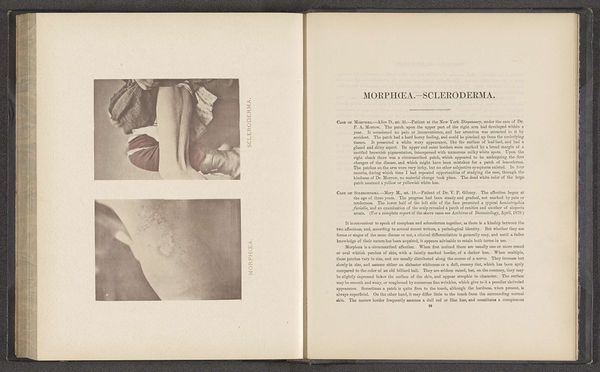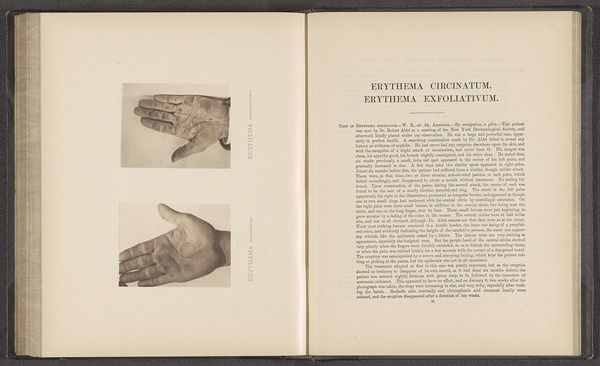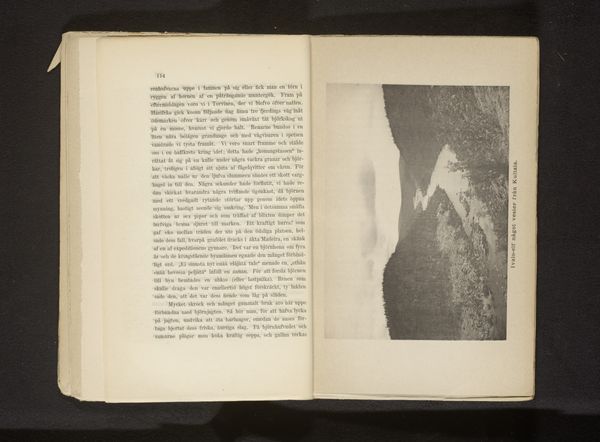
Twee aanblikken van een voetzool met symptomen van syfilis before 1894
0:00
0:00
print, photography
#
still-life-photography
# print
#
photography
#
academic-art
Dimensions: height 126 mm, width 175 mm
Copyright: Rijks Museum: Open Domain
Curator: Have you ever felt like you were peering into a lost world? That's the feeling I get when I look at this photographic print. It's entitled "Twee aanblikken van een voetzool met symptomen van syfilis," or "Two Views of a Sole of the Foot with Symptoms of Syphilis." The images are believed to be taken before 1894 by Albert Ludwig Sigesmund Neisser. Editor: Woah. Right off the bat, it's clinical. Cold, even. The stark contrast of the black and white photography heightens the severity of the images. But there is an element of care to how it’s laid out—as though Neisser felt a certain duty to record and preserve even that which most would prefer to ignore. The meticulous presentation almost softens the disturbing subject matter. Curator: That’s an interesting read, framing a difficult piece. I agree about that clinical nature you identified—photography at this time was advancing in medicine as a vital new documentation tool, one capable of capturing a precision beyond simple written description. Think about the social and ethical context of depicting disease like this back then, and the scientific advances it helped make possible. Neisser was a pioneer in bacteriology, remember—he identified the bacteria that causes gonorrhea! Editor: It also makes me think about the body as a site of both incredible vulnerability and incredible resilience. Syphilis was devastating, yes, but it also carried tremendous social stigma—the “unspeakable disease.” Looking at these images, it's easy to forget the human being attached to this foot, but the social consequences of a syphilis diagnosis extended far beyond just the physical symptoms. There were moral judgements attached, layered with ideas about sexuality, class, race... it was a perfect storm of prejudice. Curator: A lot to unpack. Seeing these stark images also sparks a dialogue in my mind between aesthetics and ethics. In the same way that flowers have symbolic relevance across varying cultures, the body becomes an arena onto which beliefs about morality, health, and beauty are writ large. It's an uncomfortable space. What can be learned from images of this nature that extends past what can be learned by other medical illustrations of its kind? Editor: I suppose, looking at it now, I wonder if Neisser recognized this, if at all, at the time. Perhaps his intention wasn't to make a grandiose ethical statement. Maybe this was all strictly medical in his perspective—just raw data collection. That said, looking back now, our contemporary views add so many more layers of complexity to these unassuming prints!
Comments
No comments
Be the first to comment and join the conversation on the ultimate creative platform.
